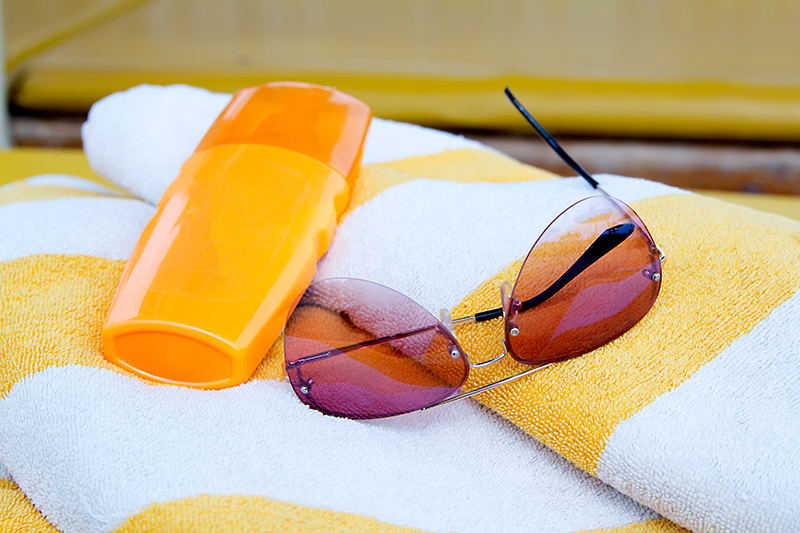
2021
Summer is finally here, and while that means it’s time to kick back and soak up the sun’s warm rays, it also means that taking precautions when it comes to UV protection is more important than ever. July is UV Safety Awareness Month, which highlights the importance of protecting your skin and eyes from the damaging effects of the sun.
What Are UV Rays?
UV rays are a type of energy that is produced by the sun. They can also come from man-made sources like welding torches or tanning beds. There are three different types of UV rays depending on how much energy they give off:
- UVA rays – These UV rays have the least amount of energy. They can cause skin cells to age and are mainly linked to long-term skin damage such as wrinkles.
- UVB rays – These have slightly more energy than other UV rays and can damage the skin directly. These rays are the most common cause of sunburns and are thought to be the cause of most skin cancers.
- UVC rays – These are the highest energy type of UV rays, but because of this they react in the earth’s atmosphere and never reach the ground. However, they can come from some tools like welding torches.
Are UV Rays Dangerous?
While you can’t see or feel the sun’s UV rays, UV can still reach you directly from the sun or be reflected off different surfaces. UV isn’t hot and isn’t connected to the temperature, so even on a cloudy day, the levels can still be damaging. Unprotected UV and sun exposure can cause harmful effects like:
- Sunburns
- Vision problems and damage to your eyes
- Premature aging of the skin
- Problems with your immune system
- Skin cancer
In order to help people stay informed about the level of UV rays they are being exposed to, The World Health Organization created the UV Index, which provides a daily forecast of the intensity of UV rays from the sun. By using a scale of 0-11+, The UV Index monitors the UV levels in your area and lets you know if UV levels are low (0) up to extreme (11+). You can look for the UV Index of your area online or on an app on your phone.
The UV level is affected by many factors like time of day, cloud cover, time of year, altitude, and location. A safe UV index level is 3-5, but sun protection is recommended when the UV levels are forecasted to be at a level 3 or higher. At this level there is a higher risk for skin damage.
UV Protection
Luckily, you can take steps to protect yourself from the sun’s harmful UV rays. By taking the right precautions, you can enjoy the sun and be outdoors safely.
- Stay in the shade – At midday the sun’s rays are the most intense. Staying in the shade during this time will help protect your skin.
- Wear skin protection – Wearing a hat or other shade-protective clothing, like long-sleeved shirts and pants, can partly shield your skin from UV rays.
- Wear eye protection – UV rays aren’t just harmful to your skin. They can also cause damage to your eyes, so it’s important to wear eye protection like sunglasses while you’re outside.
- Use sunscreen – When out in the sun, it’s important to apply sunscreen every two hours, and more often if you are sweating or swimming. It’s also very important to choose the right sunscreen. It is recommended that you should choose a sunscreen with a sun protection factor (SPF) of 15 or more, and that it should also protect against both UVA and UVB rays.
Summer should be about enjoying your time outdoors, and with a few precautions you can do so safely. If you have any problems after being in the sun, it’s important to talk to your healthcare provider. Contact Jai Medical Systems for more information about UV safety.
 Did you know that your IE browser is outdated?
Did you know that your IE browser is outdated?





